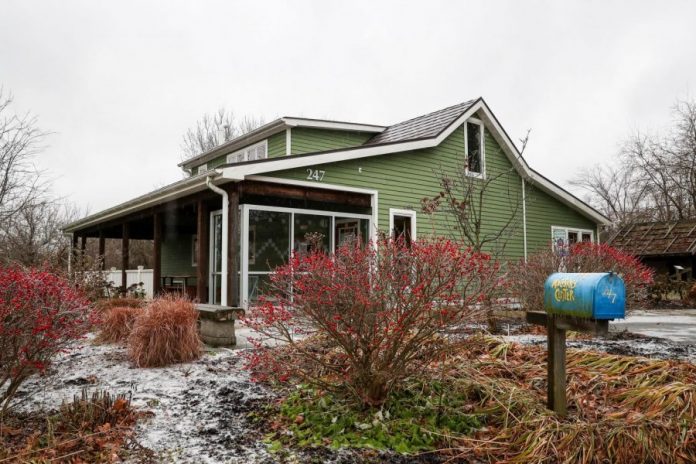The Slippery Rock Student Government Association (SGA) is combatting food insecurity on campus by developing a food pantry in the Macoskey Center.
Originally slated to open at the beginning of the fall 2018 semester, the food pantry will serve SRU students who are unsure of how they will access food. The pantry will contain nonperishable food and other basic necessities, such as toothpaste, toothbrushes, shampoo, conditioner and menstrual products. According to Elizabeth Hernandez, SGA vice president of student and academic affairs, students who experience this uncertainty for only one day will be able to access the pantry.
“Even if for one day you’re really struggling to get by, and it’s just one day you suffer from food insecurity, you can use the food pantry,” Hernandez said.
According to Hernandez, the investigation on food insecurity’s impact at SRU began when David Wilmes, associate provost for student success, attended a conference last fall. During the conference, food insecurity on college campuses was discussed.
“We had never really paid attention to [food insecurity] on campus,” Hernandez said.
The SGA student and academic affairs committee added food insecurity as a topic in the annual student life survey to determine the impact on SRU students. Of the 632 students who responded in the fall 2017 survey, 256—or 40 percent—said they knew at least one SRU student who has “experienced not knowing when or how they will get access to food.”
“We got a significant amount more than we expected,” Hernandez said.
Although SGA organized nonperishable food collections in the spring 2018 semester with the intention to open the pantry this semester, Hernandez discovered steps that SGA missed while creating the pantry. During her research over the summer, she found the College and Universities Food Bank Alliance (CUFBA), which provides suggestions for colleges to operate a sustainable pantry.
“They’re not mandated things that you have to do, but for me, they were the ideal things that we should have done and should be doing to maintain and for this to be sustainable,” Hernandez said.
Currently, the food pantry is located in the basement of the Macoskey Center, SRU’s sustainability and action center founded in 1990. The Macoskey Center resides across from Mihalik-Thompson Stadium and adjacent to Storm Harbor Equestrian Center along Harmony Road.
One of the first checklist items Hernandez sought to complete was to have Paul Novak, interim director of environmental health and safety, inspect the pantry. After inspecting the basement in mid-September, Novak determined that humidity and moisture would affect the ability to “maintain a stable climate.”
“When you’re offering foods to the public, you want to take a little extra effort to make sure that the area where you store the food is more climate controlled per se so we don’t have any huge fluctuations in temperature,” Novak said. “I really didn’t feel that it was the most ideal place to store that food.”
Novak added that there was no evidence of water or vermin intrusion in the basement.
While the SGA executive board determined at a meeting earlier this month that they would move the pantry to the first floor of the Macoskey Center, Hernandez was recently notified that Jerry Chmielewski, dean of the College of Health, Environment and Science, must approve the location change before pantry items are moved. Representatives from the Macoskey Center declined to comment.
The potential new location on the first floor is an office space, which Novak said would “absolutely” fulfill the conditions necessary to have a temperature-controlled space.
“It would be pretty much the most ideal room because it’s ADA accessible, it’s not under sewage, it’s ventilated and has windows and air conditioning,” Hernandez said.
As of press time, SGA halted advertising the food pantry while the location is unofficial. SGA takes referrals for students currently impacted by food insecurity, but according to Hernandez, no other students who haven’t been referred to them accessed the pantry.
“Our priority is getting the food out of the basement,” Hernandez said. “It’s in a safe location. No one can steal it and no one can damage it, but at the same time, that location is not proper food storage.”
The Macoskey Center is a controversial location for the pantry as the building is located in a low-foot-traffic area farther away from main academic buildings on campus. In the 2018 SGA student life survey, 14.7 percent of respondents said the food pantry would be more accessible at another location. Another 10.77 percent said they would be able to access the pantry at that location, but were unsure of the Macoskey Center’s location.
The SGA executive board decided to establish the food pantry at the Macoskey Center to provide students with privacy when entering the building. The Macoskey Centered donated a refrigerator and provides fresh produce, which is rare of other college food pantries, according to Hernandez. SGA also added Storm Harbor Equestrian Center as a Happy Bus stop on the University Village/The Grove off-campus route to help transport students safely to the Macoskey Center.
“We decided that the benefits are just way too high to try to move it somewhere else where we can’t really have those same benefits at a different location,” Hernandez said.








